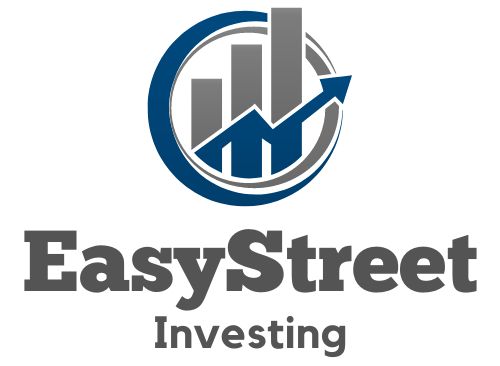Navigating the world of high-yield investments can be like stepping into a maze of potential and pitfalls. Investors seek out these opportunities for their promising returns, but the tax implications often lurk in the shadows, waiting to take a bite out of those hard-earned gains. In this guide, we’ll shed light on how different high-return assets are taxed and what you need to watch out for. You’ll gain insights into strategies that could keep more money in your pocket and less in Uncle Sam’s coffers.
As we dive into the nuts and bolts of tax treatment for these lucrative investments, let’s keep things down-to-earth. We’re talking about everything from dividends to interest earnings, and how they fit into your financial picture. By the end of our chat, you’ll have a clearer roadmap for managing your portfolio’s tax load. So grab a cup of coffee, and let’s break down the complex lingo into everyday speak. We’re here to make sense of the tax tangle so you can focus on growing your wealth with confidence.
Important Highlights
1. High-yield investments, such as junk bonds, REITs, and dividend stocks, offer higher returns compared to traditional fixed-income assets; however, these investments come with increased risk, including credit risk and market volatility. Investors should assess their risk tolerance and investment goals prior to engaging in these types of securities.
2. The tax treatment of income from high-yield investments can vary significantly. For instance, dividends may be taxed at a lower rate if they are qualified, while interest from junk bonds is often taxed as ordinary income. Understanding the specific tax implications associated with each investment type is crucial for accurate financial planning and maximizing after-tax returns.
3. Certain high-yield investment vehicles like Real Estate Investment Trusts (REITs) have unique tax considerations; the majority of dividends paid by REITs are taxed as ordinary income, potentially increasing an investor’s tax liability compared to qualified dividends. It’s essential to consult with a tax professional or utilize reliable tax software to navigate these complexities.
4. Losses from high-yield investments can sometimes be used to offset taxable income through tax-loss harvesting strategies. This involves selling underperforming securities at a loss and simultaneously purchasing similar assets to maintain your investment position while realizing a tax benefit.
5. Tax-advantaged accounts like Roth IRAs or 401(k)s may be an effective way to hold high-yield investments, as they can shield investment earnings from taxes either at the time of deposit or during withdrawal in retirement. Utilizing these accounts strategically can optimize the growth potential of high-yielding assets while minimizing the tax impact on your returns.
Understanding High-Yield Investments
High-yield investments typically offer investors higher returns in exchange for a greater risk. These can include high-yield bonds, dividend stocks, real estate investment trusts (REITs), and peer-to-peer lending platforms. Although these investments may attract those looking for substantial income streams, it’s crucial to recognize that they often carry a higher potential for loss.
Types of High-Yield Investment Vehicles
Different instruments qualify as high-yield investments. For instance, junk bonds are debt securities with lower credit ratings offering higher interest rates to compensate for the increased risk. Similarly, certain sectors’ stocks might pay elevated dividends, thus falling into the high-yield category. REITs, which invest in real estate and must pay out most of their taxable income as dividends, also serve as a source of high yields.
Tax Treatment of Dividend Income
The IRS taxes qualified dividends at a lower tax rate than ordinary income, which includes non-qualified dividends. Qualified dividends come from shares held for a specific period and issued by a U.S.-based company or a qualifying foreign entity. It’s beneficial to verify if your dividend income meets the criteria for this favorable tax treatment.
Tax Implications on Bond Interest
Interest from bonds and other debt instruments is usually taxed as ordinary income at your marginal tax rate. However, some bonds like municipal bonds can provide tax-exempt interest income, making them attractive for investors in higher tax brackets.
Evaluating Risk vs. Reward in High-Yield Investments
In analyzing high-yield opportunities, assess both the potential reward and inherent risk. While the allure of significant returns is strong, these investments can be more sensitive to economic downturns and credit risks. A thorough due diligence process is imperative when venturing into this territory.
Strategies for Mitigating Tax Liabilities
Investors can employ various strategies to manage the tax liabilities associated with high-yield investments. One approach involves holding these assets in tax-advantaged accounts such as IRAs or 401(k)s where earnings grow tax-deferred or even tax-free in case of Roth accounts. Tax-loss harvesting is another strategy that can offset capital gains by realizing losses on other investments.
Impact of Inflation on High-Yield Investments
Inflation erodes purchasing power and can diminish the real return on investment. Consider this factor when calculating potential net gains from high-yield options, especially those with fixed interest rates like bonds that may not keep pace with rising inflation.
Navigating Regulatory Changes and Compliance
Federal regulations may influence high-yield investment markets and their associated taxation. Staying informed about regulatory changes through authoritative sources like the Securities and Exchange Commission (SEC) helps ensure compliance and strategic decision-making.
Year-End Tax Planning for High-Yield Investments
Approaching year-end, consider how your high-yield investments will affect your overall tax burden. You may want to consult with a financial advisor or tax professional to explore opportunities for optimizing your investment-related taxes before the year concludes.
Tax Reporting Requirements for Investors
All income from high-yield investments must be reported accurately on your annual tax return. The forms typically involved are 1099-DIV for dividends and 1099-INT for interest income. Proper reporting ensures legal compliance while allowing you to take advantage of any applicable deductions or credits.
What Should Investors Remember About Managing Taxes on High-Yield Investments?
- Analyze each investment’s risk profile relative to its yield potential.
- Diversify holdings across different types of high-yield options to spread risk.
- Maintain awareness of changing tax laws affecting investment taxation.
- Leverage tax-efficient accounts like IRAs and 401(k)s when appropriate.
- Consult with a financial professional regularly to align strategies with current market conditions.
- Incorporate year-end planning tactics such as tax-loss harvesting to mitigate taxable gains.
- Prioritize accurate reporting by keeping detailed records of all transactions and statements throughout the year.
Frequently Asked Questions
What exactly are high-yield investments?
High-yield investments refer to assets that offer higher returns compared to average market rates. These typically include corporate bonds with higher risk, dividend-paying stocks, real estate investment trusts (REITs), and certain mutual funds.
How are high-yield investments taxed?
The tax treatment of high-yield investments depends on the type of investment. Interest from high-yield bonds is usually taxed as ordinary income, while qualified dividends from stocks can be taxed at lower capital gains rates.
Can I lose money with high-yield investments?
Absolutely. High-yield investments often come with increased risk. If a company struggles to make profits or defaults, you could lose part or all of your invested capital.
Are there any tax-advantaged high-yield options?
Yes, some high-yield investments like certain municipal bonds may offer tax-exempt interest. Additionally, holding assets in retirement accounts like an IRA can defer taxes on gains until withdrawal.
Is it wise to have high-yield investments in a portfolio?
Including high-yield options can diversify your portfolio and potentially increase overall returns. However, balance and risk tolerance are key factors to consider before investing.
Do all high-yield bonds get taxed at the same rate?
No, the tax rate varies depending on whether the bond’s interest is considered ordinary income or qualifies for special tax treatment.
How do I report income from high-yield investments on my taxes?
You’ll typically receive a form such as a 1099-INT for interest or 1099-DIV for dividends, which you must report when filing your taxes.
What’s the difference between yield and total return?
Yield refers to the earnings generated and realized on an investment over a particular period, while total return includes both yield and any changes in value of the investment itself.
Are REITs considered high-yield investments?
Many REITs distribute a significant amount of their taxable income as dividends, often resulting in higher yields relative to other equities, thus they can be considered high-yield investments.
How does inflation impact high-yield investments?
Inflation can erode the purchasing power of your returns. High-yield investments often aim to outpace inflation but remember that higher yields also come with higher risks.
Closing Insights on High-Yielding Options and Their Fiscal Implications
Diving into the world of high-yield investments can seem like navigating choppy financial waters; yet, they hold the allure of greater returns amid the sea of traditional low-risk options. It’s crucial to understand not just the potential rewards but also how these returns sync with our taxation system. By aligning your strategy with an awareness of fiscal repercussions and maintaining a balanced portfolio suited to your risk appetite, you stand better positioned in cultivating a thriving financial landscape.
Tax efficiency remains a pivotal aspect of maximizing those hard-earned returns from such lucrative ventures. As we’ve explored various facets surrounding these investments’ tax treatment, it’s evident that informed decisions hinge upon staying abreast with current laws and seeking tailored advice if needed. With this knowledge in hand, investors are well-equipped to harness the benefits of high yields without being blindsided by their associated tax obligations.

